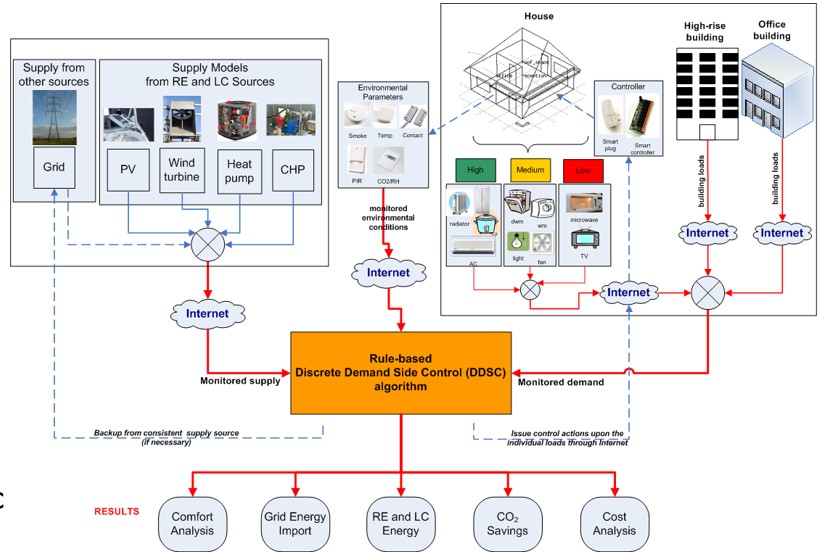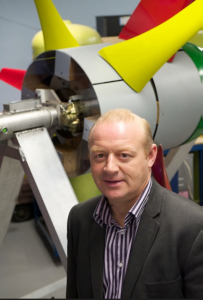REMIROCaN – Building Integrated Renewable Energy
Project overview
Renewable Energy Microgrid Integration for Remote, Off-grid Cabins in Nunavut
Intégration d’un microréseau d’énergie renouvelable pour des cabanes éloignées et hors réseau au Nunavut
Nutaannguqtaqtut Huanngautinik Iliuraiyut Inuilrumi, Nunainnaqmi-hanayunik ikluqpangnik Nunavunmi
ᐊᑐᓕᖅᑭᑦᑕᐅᔪᓐᓇᖅᑐᓂᒃ ᐆᒻᒪᖅᑯᑎᓂᒃ ᑲᑎᖅᓱᖅᓯᒪᔪᓂᒃ ᐅᖓᓯᑦᑐᓄᑦ, ᑕᒫᓂ ᑕᑯᔅᓴᐅᓂᖏᑦᑐᓂᒃ ᐃᓗᕋᓛᓐᓂᑦ ᓄᓇᕗᒻᒥ
Communities across Inuit Nunangat are heavily dependent on fossil fuels to support nearly all their heat and electricity loads. However, there is a strong desire to develop renewable energy sources to decrease the dependence on fossil fuels, mitigate climate change impacts and improve resiliency. To achieve these goals, the project herein has three proposed key areas of work:
1. Feasibility assessments and technological evaluations for three key types of house-scale renewable energy systems well-suited to Inuit Nunangat;
2. Integration and performance evaluation of house-scale renewable energy systems and energy storage with demonstration house in Iqaluit, Nunavut; and
3. Development of remedies to barriers of renewable energy adoption in Inuit Nunangat and advancement of socio-economic development.
This project will integrate Inuit values, needs and interests with renewable energy technology evaluations and deployment in Inuit Nunangat. Remedies to barriers of renewable energy adoption will be developed in accordance with Inuit Quajimajatuqangit through coordination with the Qikiqtani Inuit Association’s Inuit Qaujimajatuqangit department, the parent Inuit birthright organization of the project proponent, Nunavut Nukkiksautiit Corporation.
Project location
Iqaluit, NU.
Summary
The high dependence on petrochemicals in northern remote communities of Canada provides an opportunity to reduce carbon emissions and energy costs through the management and reduction of dwelling energy loads and the implementation of renewable energy technologies. This project will investigate the energy-resilience and diesel consumption reduction for Arctic dwellings via building energy demand reduction and the integration of renewable energy conversion technologies, focused on the IQ principles of qanuqtuurniq (being innovative and resourceful) and avatittinnik kamatsiarniq (respect and care for the land, animals, and the environment).
This project will advance confidence and capacity in building and energy conversion technologies applicable to reducing climate change impacts and increasing energy resilience in Inuit Nunangat. This will utilise the experience and knowledge gained from remote community sustainable energy work within the UK to inform the specific objectives of this project:
– Evaluate the feasibility and building integration of small-scale renewable energy conversion technologies for off-grid dwellings and additional scales of loads within Inuit Nunangat
– Design energy optimised dwellings with systems integration for at least 50%. emissions reduction compared to current building code requirements and diesel-only energy supply
– Analyse barriers to renewable energy adoption in Inuit Nunangat and identify actionable remedies
– Develop indigenous approaches for socio-economic advancement of renewable energy within Inuit Nunangat
La forte dépendance à l’égard des produits pétrochimiques dans les communautés éloignées du nord du Canada offre la possibilité de réduire les émissions de gaz à effet de serre et les coûts énergétiques par la gestion et la réduction des charges d’énergie électrique dans les habitations et l’adoption de technologies d’énergie renouvelable. Ce projet étudiera la résilience énergétique et la réduction de la consommation de diesel des habitations de l’Arctique par la réduction de la demande d’énergie des bâtiments et l’intégration de technologies de conversion d’énergie renouvelable, en se concentrant sur les principes des connaissances traditionnelles des Inuits de Qanuqtuurniq (être innovant et ingénieux) et Avatittinnik Kamatsiarniq Avatittinnik (respect et soin de la terre, des animaux et de l’environnement).
Ce projet fera progresser la confiance et les capacités dans les technologies de construction et de conversion énergétique applicables à la réduction des impacts des changements climatiques et à l’augmentation de la résilience énergétique dans l’Inuit Nunangat. Il s’agira d’utiliser l’expérience et les connaissances acquises dans le cadre du travail sur l’énergie durable dans les communautés éloignées au Royaume-Uni afin d’éclairer les objectifs particuliers de ce projet :
– Évaluer la faisabilité et l’intégration dans les bâtiments de technologies de conversion d’énergie renouvelable à petite échelle pour les habitations hors réseau et les échelles de charges supplémentaires au sein de l’Inuit Nunangat;
– Concevoir des habitations optimisées sur le plan énergétique avec intégration des systèmes pour une réduction d’au moins 50 % des émissions par rapport aux exigences actuelles du code du bâtiment et à l’approvisionnement en énergie uniquement par diesel;
– Analyser les obstacles à l’adoption des énergies renouvelables au sein de l’Inuit Nunangat et désigner des remèdes applicables;
– Élaborer des approches autochtones pour la promotion socio-économique des énergies renouvelables au sein de l’Inuit Nunangat.
Atuqpauhiit uqhughanik ukiuqtaqtumi inuilrumi nunallaarnit Kanatami ikighilaarahuariamik paurnik anialattiyunik akighilaarahuaqhugulu akighait qulliqtuutit munariplugit ikighilaarahuaqhugillu qulliqtuqtut atuqtittivallianahuaqlutiklu nutaannguqtaqtunik huanngautinik. Hapkua havaaghakkut ihivriuqhinahuat huanngautituqpallaanngitunik uqhuqtuqtuniklu Ukiuqtaqtumi aimavingnit taimaa hanaplutik huanngautinik atuqpallaanngittunik iliuraiplutik nutaannguqtaqtunik huanngautinik alruyaqtuqtunik, ihumagiplugit IQ-nit maliktaghat qanuqtuurniqmik (hanatuyaamik pivighaqariamiklu) taimaalu avatittinik kamatsiarniq (ihumagittiaqhugu munarittiaqhugulu nuna, anngutighat, avatiillu).
Havaaghakkut hapkua naahurittiaqpaalliutauniaqtuq havaktighaliuqpallialutik huanngautiniklu himmiqtuiyaamik atuqtauvaktunik ikighilaarutauyut hilamit aallannguqpalliayunik huanngautiniklu atuqtailivaalliriamik Inuit Nunanganit. Taimaa ilihimayauliqtut qauhimayauliqtullu inuilrumit nunallaarnit atuqtauniaqtut nutaannguqtaqtunik huanngautinut havaaghainik nanikiaq UK-mi ilittuqhitighait kitukianut inirumayainut havaaghanit:
– Qauyihailutik akighainik hanayaghainiklu mikiyunik nutaannguqtaqtunik huanngautinik nunainnaqmi hanayaamik ahiagullu hanayaghanik Inuit Nunanganit
– Hanalutik huanngautiqattiaqtunik aimavingnik qulliqtuutinik iliurailutik avighugu 50%-mik anialattiyauyut ikighilaaqhugit ihumagiplugu tajja hanayut maliktaghainit pitquyauhimayut uqhuqyuaniklu kihiinnaq huanngautiqaqhutik
– Qauyihailugit ayuqhautit nutaannguqtaqtunut huanngautinik atuqtitauyaamik Inuit Nunanganit ilittuqhaqlugillu ihuaqhaitjutighat
– Pitquhituqhutik havauhighaliuqlutik inuuhiqattiarniqmut-manighiurniqmik hivumuuqtitpalliaplugu nutaannguqtaqtunik huanngautinik atuqtut Inuit Nunanganit
ᑕᑎᖃᕐᓂᖅᓴᐅᓲᖑᒻᒪᑕ ᐅᖅᓱᐊᓗᓐᓃᓐᖔᖅᑐᓂᒃ ᐃᓚᔅᓴᓂᒃ ᐅᑭᐅᖅᑕᖅᑐᒥ ᐅᖓᓯᑦᑐᒥᐅᑕᕐᓂᑦ ᓄᓇᓕᓐᓂ ᑲᓇᑕᒥ ᐊᑐᓐᖏᓂᖅᓴᐅᒍᓴᖅᑐᓂᒃ ᐸᐅᕐᓂᑦ ᓴᖅᑭᐸᑦᑐᓂᒃ ᐊᒻᒪᓗ ᐆᒻᒪᖅᑯᑎᓄᑦ ᐊᑭᑭᓐᓂᖅᓴᐅᓕᕐᓗᑎᑦ ᐊᐅᓚᑕᐅᑦᑎᐊᕐᓗᑎᑦ ᐊᒻᒪᓗ ᐆᒻᒪᖅᑯᑎᓕᐅᑐᐃᓐᓇᖏᓪᓗᑎᑦ ᐊᑐᓕᖅᑎᑕᐅᑦᑎᐊᕐᓗᑎᓪᓗ ᑕᒪᒃᑯᐊ ᐊᑐᓕᖅᑭᖅᑕᐅᔪᓇᖅᑐᑦ ᐆᒻᒪᖅᑯᑎᓕᕆᓃᑦ ᓱᓇᑐᐃᓐᓇᑦ. ᑕᒪᓐᓇ ᐱᓕᕆᐊᖅ ᖃᐅᔨᓴᕐᓂᐊᖅᑐᖅ ᐆᒻᒪᖅᑯᑎᓂᒃ ᐊᑐᕈᓐᓇᑦᑎᐊᕐᓂᖅ ᐅᖅᓱᐊᓗᓐᓂᓪᓗ ᐊᑐᓐᖏᓂᖅᓴᐅᓕᕐᓗᑎᑦ ᐅᑭᐅᖅᑕᖅᑐᒥ ᐊᖏᕐᕋᔪᓂᒃ ᐃᓪᓗᓕᐅᖃᑦᑕᓗᑎᑦ ᐆᒻᒪᖅᑯᑎᑐᓐᖏᓂᖅᓴᐅᔪᓂᒃ ᐊᒻᒪᓗ ᐋᖅᑭᔅᓱᐃᖃᑎᖃᕐᓗᑎᑦ ᐊᑐᓕᖅᑭᒍᓐᓇᖅᑐᓂᒃ ᐆᒻᒪᖅᑯᑎᓂᒃ ᓴᓇᒍᓐᓇᖅᑐᓂᒃ, ᑕᑯᓐᓇᓂᖅᓴᐅᓗᑎᓪᓗ ᐃᓄᐃᑦ ᖃᐅᔨᒪᔭᑐᖃᖏᓐᓂ ᒪᓕᒐᕐᓂᑦ ᖃᓄᖅᑑᕈᑎᓂᒃ ᐊᒻᒪᓗ ᐊᕙᑎᑦᑎᓐᓂ ᑲᒪᑦᑎᐊᓂᕐᒥᑦ (ᓲᕐᓗ ᐅᑉᐱᕆᔭᖃᑦᑎᐊᕐᓗᑕ ᐱᓯᒪᑦᑎᐊᕐᓗᑎᒍ ᓄᓇᕗᑦ, ᐆᒪᔪᑦ ᐊᕙᑎᕗᓪᓗ).
ᑕᒪᓐᓇ ᐱᓕᕆᐊᔅᓴᖅ ᐱᓇᓱᓐᓂᖅᓴᐅᓂᐊᖅᑐᖅ ᐊᑐᕐᓂᖅᓴᐅᓗᓂᓗ ᐃᓪᓗᓂ ᐆᒻᒪᖅᑯᑎᓕᐅᕈᓐᓇᖅᑐᓂᒃ ᓄᐊᑦᑎᒍᓐᓇᖅᑐᓂᒃ ᓯᓚ ᐊᓯᔾᔨᐸᓪᓕᐊᓂᖓᓐᓄᑦ ᐊᑦᑐᐃᓂᖃᓗᐊᖅᑕᐃᓕᒪᑎᒐᓱᐊᕐᓗᒋᑦ ᐊᒻᒪᓗ ᐆᒻᒪᖅᑯᑎᓂᒃ ᓴᓐᖏᓂᖅᓴᐅᓇᓱᐊᕐᓗᓂ ᐃᓄᐃᑦ ᓄᓇᖏᓐᓂ. ᑕᒪᓐᓇ ᐋᖅᑭᔅᓱᐃᓗᓂ ᐊᑐᖅᓯᒪᔭᒥᓂᒃ ᖃᐅᒪᓂᕐᒥᓂᒃ ᐊᑐᕐᓗᑎᑦ ᐅᖓᓯᑦᑐᒥ ᓄᓇᓕᓐᓂ ᐊᐅᓚᑦᑎᑦᑎᐊᕋᓱᐊᕐᓗᑎᑦ ᐆᒻᒪᖅᑯᑎᓂᑦ ᑯᐃᑉ ᐊᐅᓚᑕᖏᓐᓂ ᓄᓇᓂᑦ ᓇᓗᓇᐃᔭᖅᓯᒪᓗᑎᑦ ᐱᓕᕆᐊᔅᓴᐅᒐᔭᖅᑐᑦ ᐊᓯᖏᓂ:
− ᖃᐅᔨᓴᕐᓗᑎᑦ ᐱᔭᔅᓴᐅᒐᔭᕐᒪᖔᖅ ᐃᓪᓗᓕᐅᕐᓗᑎᑦ ᐊᖏᔫᓐᖏᑦᑑᒐᓗᐊᕐᓂᑦ ᐆᒻᒪᖅᑯᑎᓂᑦ ᐊᑐᓕᖅᑭᒍᓐᓇᖅᑕᖏᓐᓂ ᓄᐊᑦᑎᔾᔪᑎᒥᑦ ᐊᖏᕐᕋᕆᔭᐅᔪᓂᒃ ᐊᒻᒪᓗ ᐊᓯᖏᓐᓂ ᐊᖏᓂᖅᓴᐅᒍᓐᓇᕋᓱᐊᕐᓗᒋᑦ ᓄᐊᑕᐅᔪᑦ ᐆᒻᒪᖅᑯᑏᑦ ᐃᓄᐃᑦ ᓄᓇᖏᓐᓂ.
− ᐋᖅᑭᔅᓱᐃᓗᑎᑦ ᐆᒻᒪᖅᑯᑎᓂᒃ ᐊᖏᕐᕋᓐᓄᑦ ᐊᑐᓐᖏᓂᖅᓴᐅᓕᕈᓐᓇᕐᓄᑎᑦ ᐊᕝᕙᖏᓐᓂ. ᐃᔅᓵᕿᓐᖏᓂᖅᓴᐅᓗᑎᓪᓗ ᐃᓪᓗᓂᑦ ᒪᓕᒐᖏᓐᓂ ᒪᓕᑦᑎᐊᕐᓗᑎᑦ ᐊᒻᒪᓗ ᐅᖅᓱᐊᓗᖅᑐᑦᑐᓄᑐᐊᖅ.
− ᖃᐅᔨᓴᕐᓗᒋᑦ ᐊᐳᖅᑕᕈᑕᐅᕙᑦᑐᑦ ᐊᑐᓕᖅᑎᒍᓐᓇᖅᑐᓂᑦ ᐆᒻᒪᖅᑯᑎᓕᕆᓂᕐᒥᑦ ᐃᓄᐃᑦ ᓄᓇᖏᓐᓂ ᐊᒻᒪᓗ ᓇᓗᓇᐃᔭᕐᓗᒋᑦ ᐋᖅᑭᐅᒪᔾᔪᑕᐅᔪᓐᓇᖅᑐᑦ.
− ᐋᖅᑭᔅᓱᐃᓗᑎᑦ ᓄᓇᖃᖅᑳᖅᑐᒥᓂᕐᓂᑦ ᐃᓄᓕᕆᓂᕐᒧᑦ ᑲᒪᔪᓐᓇᕐᓗᑎᑦ ᐅᓪᓗᒥᓕᓴᐅᓂᖅᓴᓂᑦ ᐆᒻᒪᖅᑯᑎᓂᒃ ᐃᓄᐃᑦ ᓄᓇᖏᓐᓂ
People
Principal investigators
Co-investigators and collaborators
-
Colin Rennie
Co-Investigator

-
Katelyn Kirby
Collaborator

-
Sean Ferguson
Collaborator

-
Julien Cousineau
Collaborator

-
Keith Cleland
Collaborator

-
Stephanie Ordonez-Sanchez
Co-Investigator




